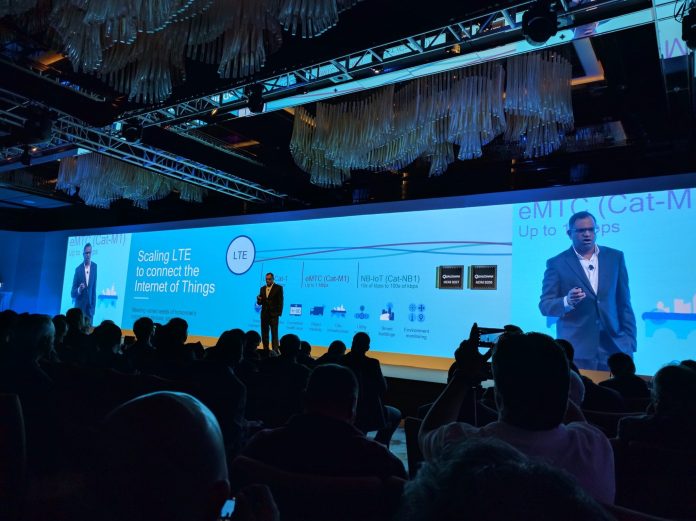HONG KONG — Qualcomm announced today strong ecosystem adoption from industry OEMs for its MDM9206 LTE internet of things (IoT) modem. The IoT modem, announced last year, is a connectivity solution for applications such as battery-powered sensors, and features a design for IoT that Qualcomm claims to offer lower power consumption and longer range connectivity than the company’s previous LTE generations.

The MDM9206 modem is designed to support LTE CAT M1 (eMTC), and be upgradeable to dual category M1/NB-1 mode with an expected upcoming software update.
“The global IoT opportunity is rapidly expanding,” said Serge Willenegger, senior vice president, product management at Qualcomm. “IoT will be much more than about connecting people to things; they will be extending information management systems all the way to the edge, allowing machines and devices to work with one another and support increasing service opportunities and operational efficiencies across most industries. Momentum around our MDM9206 modem for Cat M1 and NB-1 demonstrates demand today for reliable, optimized LTE cellular connectivity to support the new range of IoT applications and services.”
According to Qualcomm, compared to its previous LTE generations, the modem is designed to address cellular connectivity for low data rate IoT applications more efficiently addressed by a narrowband modem, across a wide range of new business opportunities within the IoT, including smart energy and metering, building security, infrastructure, industrial control and automation, retail point of sale, asset tracking, medical, lighting and aftermarket telematics.
“AT&T and Qualcomm Technologies have a successful and long-standing relationship that is deepening with the IoT,” said Chris Penrose, president of internet of things at AT&T. “Qualcomm Technologies will join our pilot of LTE-M network and module technology that will enable a new generation of industries and applications for IoT. The Qualcomm MDM9206 modem will help deliver new, intelligent and cost-effective IoT services, and use cases to our industrial, commercial and smart cities customers.”
The category M1 and NB-1 LTE modes designed in the MDM9206 modem bring enhancements and optimizations to LTE that are designed to reduce IoT device complexity, support, multi-year battery life and provide deeper coverage than Qualcomm’s previous LTE generations, according to the chipmaker. The company says this will help reach challenging locations such as deep inside buildings and remote rural areas. The new technologies also use existing LTE infrastructure and spectrum, coexisting with today’s mobile broadband services.
The LTE IoT technology is backed by 3GPP global standards with a roadmap to 5G. According to Qualcomm, it will continue to evolve beyond 3GPP Release 13 with new features, such as support for multicast and positioning, with the goal to help establish the foundation for narrowband 5G IoT.
“Thanks to the improved building blocks for IoT solutions, every facet of our world is becoming connected,” said Mike Lanman, senior vice president of IoT and enterprise products at Verizon. “By utilizing solutions including Qualcomm Technologies’ MDM9206 modem, which is integrated with IoT platforms like Verizon’s Thingspace, we can accelerate the delivery of connected services specifically tailored for rapidly growing markets like smart metering for utilities including electric, gas and water.”
Module OEMs are expected to launch MDM9206-based Cat M1 capable modules in early 2017. A software upgrade for Cat NB-1 is expected to be available shortly thereafter.

